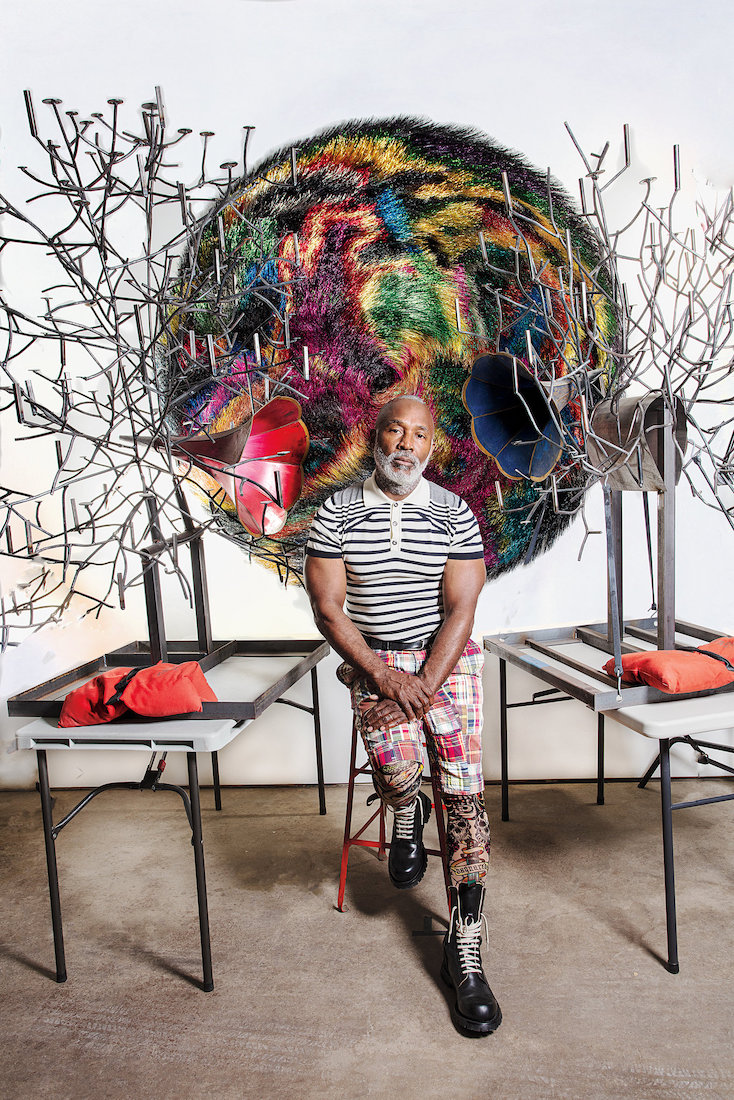Megan O’Grady, The New York Times
THE INAUGURATION OF Nick Cave’s Facility, a new multidisciplinary art space on Chicago’s Northwest Side, has the feeling of a family affair.
In April, inside the yellow-brick industrial building, the classical vocalist Brenda Wimberly and the keyboardist Justin Dillard give a special performance for a group that includes local friends, curators and educators, as well as Cave’s high school art teacher, Lois Mikrut, who flew in from North Carolina for the event. Outside, stretching across the windows along Milwaukee Avenue, is a 70-foot-long mosaic made of 7,000 circular name tags with a mix of red and white backgrounds, each of them personalized by local schoolchildren and community members. They spell out the message “Love Thy Neighbor.”
The simple declaration of togetherness and shared purpose is a mission statement for the space, a creative incubator as well as Cave’s home and studio, which he shares with his partner, Bob Faust, and his older brother Jack. It’s also a raison d’être for Cave, an uncategorizable talent who has never fit the mold of the artist in his studio. Best known for his Soundsuits — many of which are ornate, full-body costumes designed to rattle and resonate with the movement of the wearer — his work, which combines sculpture, fashion and performance, connects the anxieties and divisions of our time to the intimacies of the body.
Featured Image, Renée Cox
Read Full Article @ The New York Times



